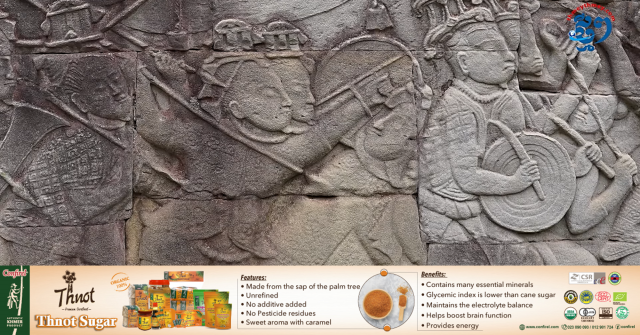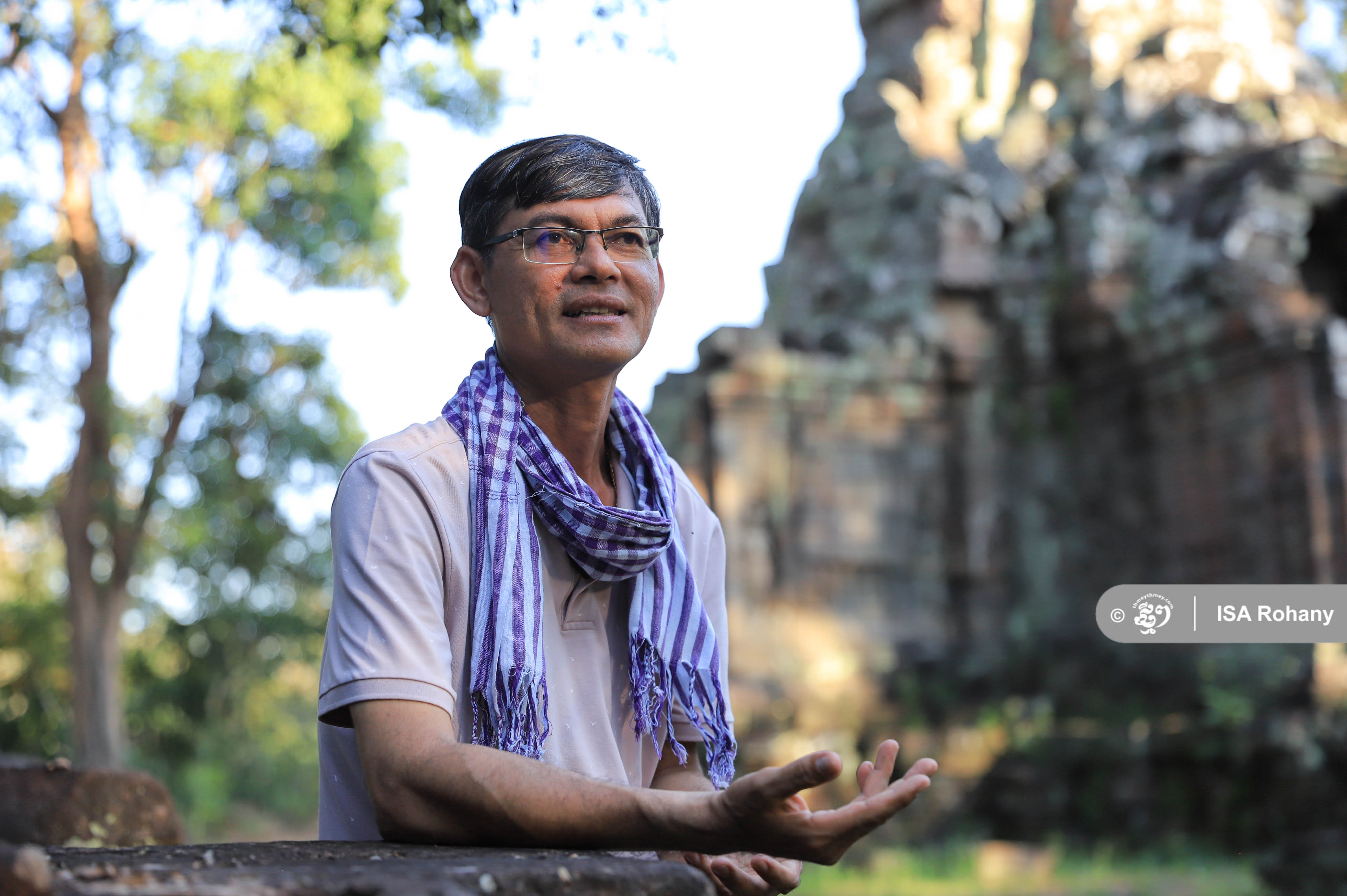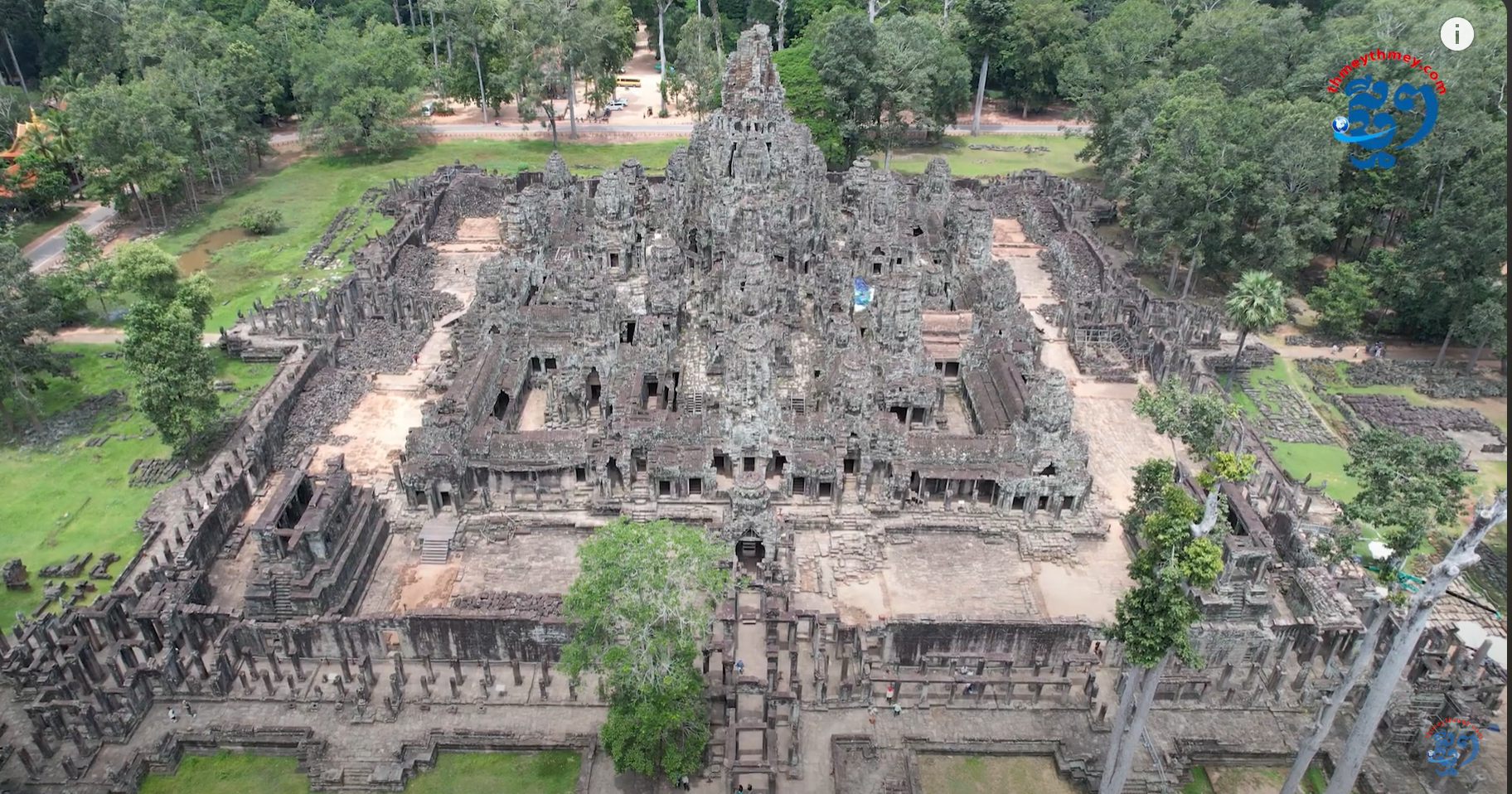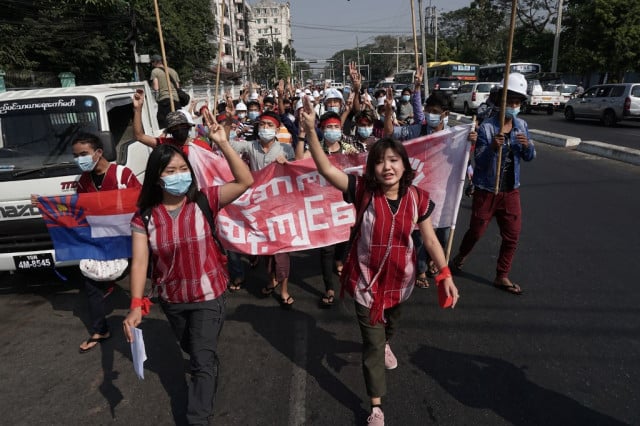Khmer-Champa Relations: Enemies and Good Friends

- By Isa Rohany
- January 6, 2024 10:30 AM
SIEM REAP — Bordering one another for centuries, the kingdoms of the Khmer and of Champa at times were at war with each other, their conflicts immortalised in stone on the walls of temples at Angkor. But there also were times when the Khmer and the Cham were at peace, said You Khemarak, a professional tourist guide in the Angkor Archaeological Park in Siem Reap province.

Caption: You Khemarak, a professional tourist guide in the Angkor Archaeological Park in Siem Reap province. Photo: Isa Rohany
As he explained, evidence of this ranges from the information written in stone inscriptions of the time, to some statues and scenes depicted in bas-reliefs at temples such as the Bayon.
Isa Rohany: Both folktales and bas-reliefs at temples…speak of battles between the Khmer and the Cham people. Was there a time when they were on good terms and at peace with one another?
You Khemarak: Yes, the Cham and the Khmer were enemies and friends. Conflicts between nations and people tend to be normal and inevitable. According to bas-reliefs illustrating recent history in the 12th century, the Cham were the traditional enemy of the Khmer, and invasions often occurred from the 10th century on. This included King Rajendravarman II leading a successful military campaign against them in the 10th century. Conflicts were often associated with religious power struggles. The Cham of today are the descendants of those who ruled the land of Champa, which is present day central Vietnam. Although they have largely converted to Islam, their ancestors were of Hindu religion between the first and the 12th centuries.
_1704508567.png)
Caption: Khmer soldiers (L) fighting Cham soldiers (R). They are distinguishable by the Chams' triangular headware. A bas-relief at the temple of Bayon in Cambodia's Siem Reap province. Photo: Chhorn Sophat
Even though the two populations had seen victory and defeat alternating over the centuries, in 1177, the Chams successfully invaded the city of Angkor where the Angkor Wat temple stood and still stands.
Under the supervision of a determined Khmer army general named Jayavarthon—who would later become King Jayavarman VII, one of the most famous Angkorian monarchs—it took the Khmer army four years to successfully push back the Chams and liberate Angkor. The battles on land and on water between the Khmer and the Chams were immortalized in scenes carved on the walls of the Bayon temple.
_1704508785.png)
Caption: Cham soldiers marching into battle. A bas-relief at the temple of Bayon in Cambodia's Siem Reap province. Photo: Chhorn Sophat
However, before these confrontations took place, Jayavarthon had been sent to the Champa city of Vijaya to serve as a regional king under the authority of King Suryavarman II, the builder of Angkor Wat.
it is important to remember that Champa at the time was not really a unified kingdom. Therefore, fragmentation occurred among the Cham. When Jayavarthon was at Vijaya, relations between the Khmer and that region of Champa were considered peaceful. One may assume that Jayavarthon even took a Cham wife and a Cham son named Vichea Nun who would become a powerful army commander.
_1704508896.png)
Caption: Cham soldiers marching into battle. A bas-relief at the temple of Bayon in Cambodia's Siem Reap province. Photo: Chhorn Sophat
Vichea Nun was tasked to neutralise both Cham and Khmer rebellions during the reign of King Jayavarman VII. As a viceroy (uparaja) representing his father, he would suppress Khmer rebellions in a region that may be present-day Battambang province and in Phimai in the early 13th century.
Based on this historical evidence, we can conclude that the Khmer and Cham people were both friends and enemies at certain times.
The beauty of the Bayon and the walled city of Angkor Thom
Just a few kilometres away from the famed Angkor Wat temple, Jayavarman VII’s walled city of Angkor Thom, with its many large temples including the Bayon, is a vast and significant archeological site.
The Bayon’s numerous bas-reliefs tell the story of that era ranging from religions to wars. There also are scenes of people’s daily life and others that today are more difficult to interpret.

_1704509200.png)
_1704509231.png)
Conducted in Khmer for ThmeyThmey News, this interview was translated by Ky Chamna for Cambodianess News.
To watch the original interview in Khmer language, click on this link:















